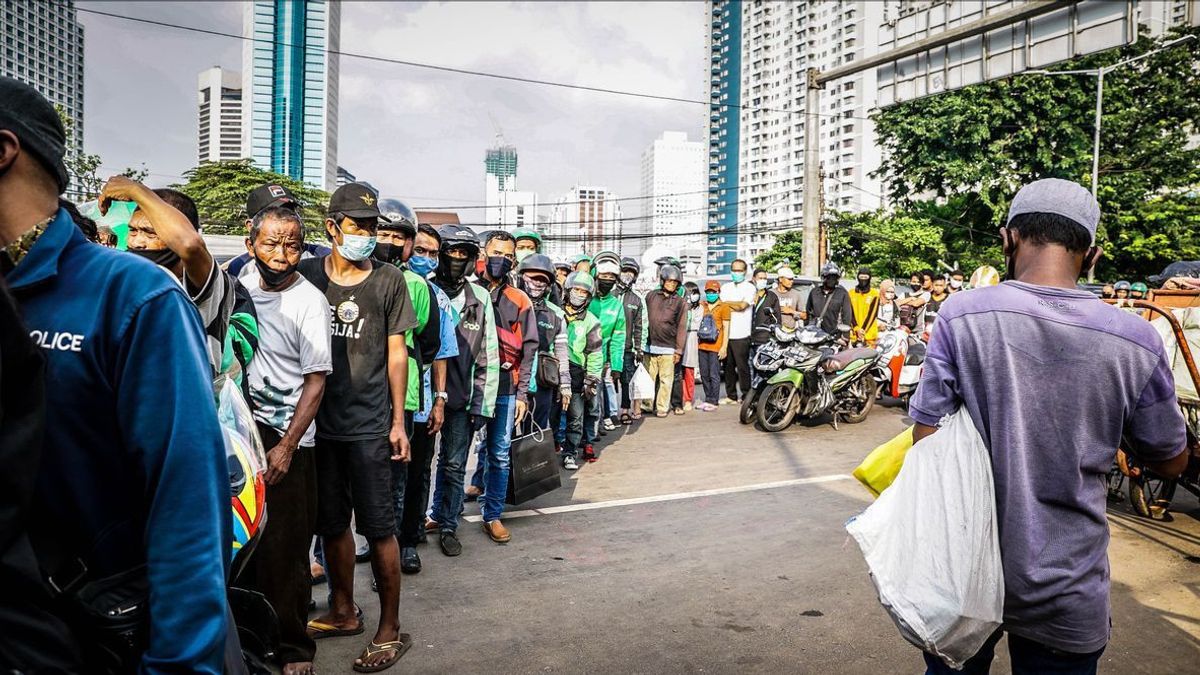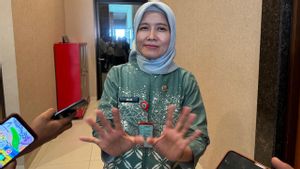JAKARTA - The government officially announced that the growth of gross domestic product (GDP) throughout 2020 will be at a level of minus 2.2 percent to minus 1.7 percent. The contraction was mostly caused by the impact of the pandemic which began to spread at the end of the first quarter of last year.
The Financial Services Authority (OJK) itself said that the 2020 trip was a critical phase for the financial sector. The institution led by Wimboh Santoso then issued POJK 11/POJK.03/2020 as a response to reduce turbulence in the financial industry in March 2020.
One of the important points in this regulation is the credit restructuring policy for financing up to IDR 10 billion. On its way, until January 4, the restructuring value reached IDR 971 trillion with a total of 7.5 million debtors.
Of that amount, IDR 386.6 trillion were debtors who came from the micro, small and medium enterprises (MSME) segment with 5.81 million customers. Meanwhile, the other IDR 584.4 trillion were non-UMKM debtors, which were mentioned as 1.7 million people.
Even though the nominal amount of credit repair was nearly IDR 1.000 trillion, the Chairman of the OJK Board of Commissioners confirmed that this figure was the culmination of both credit and financing restructuring.
"It is flat (the value of banking restructuring) at this time," said Wimboh Santoso.
He also said that credit growth this year will be at a high enough level when compared to 2020. This is because after being corrected quite deeply last year, it is believed that a surge in banking intermediation will occur before it reaches normal levels.
"Just like the 1997 or 1998 crisis, and the financial crisis in 2008, where after going through the critical phase, credit could grow to 25 percent, I remember that very well. However, after that it will return to normal levels", he concluded.

For information, the Financial Services Authority revealed that in 2020 bank credit growth contracted quite deeply to minus 2.41 percent. This figure is very different from the performance of Islamic banking financing which is still growing by 9.5 percent.
Meanwhile, the four state-owned banks that are members of the State Bank Association (Himbara) were only able to slightly increase by 0.6 percent.
Burden sharing Bank Indonesia
Bank Indonesia (BI) as one of the safeguarding institutions for financial stability also plays an important role in sustaining shocks through burden sharing schemes. In this way, the monetary authority for the first time can immediately annex debt securities released by the government through the primary market.
In fact, BI should not actually intervene in the financial market directly because it has a position as an independent institution in the industry. However, this accommodative policy was taken to help the government collect state expenditure financing.
This strategic move by the central bank with the government is contained in Law Number 2 of 2020 concerning the Stipulation of the Perppu 1 of 2020 concerning State Financial Policy and Financial System Stability for Handling the Corona Virus Disease 2019 (COVID-19) Pandemic.
As of December 15, 2020, Bank Indonesia is known to have absorbed IDR 473.4 trillion of government securities (SBN) through a burden-sharing scheme.
However, BI Governor Perry Warjiyo confirmed that he would not extend the burden sharing scenario this year.
"What we will do in 2021 is to buy government bonds through the primary market but using the auction mechanism as a non-competitive bidder," he said in a virtual seminar, Friday, January 22.
In addition, Perry also explained that the central bank carried out the same monetary operation through additional auctions or green-shoe options.
"So it's different from the burden sharing we did last year where BI became the direct buyer, both for public goods and non-public goods," he said.
The boss of the monetary authority explained that until January 19, 2020, Bank Indonesia was said to have collected government securities (SBN) worth IDR 13.66 trillion. This figure consists of IDR 9.18 trillion through the main scheme and IDR 4.48 trillion obtained through additional auctions.
Fiscal policy
The government, through the Ministry of Finance, uses the State Revenue and Expenditure Budget (APBN) as the spearhead of crisis management and economic recovery. Throughout 2020, this fiscal instrument will focus on two things. First, controlling the pandemic through the health sector. The second is about implementing social protection programs by providing a number of assistance.
In order to meet the budgets of these two sectors, the government accommodated changes in the posture of the State Budget through Perpres 54/2020 and then changed again to Perpres 72/2020.
One of the things that attracted attention was the policy of widening the deficit to 6.34 percent of GDP. In fact, the budget deficit is usually set at not exceeding 3 percent of gross domestic product.
The decision to increase the difference in income and expenditure was aimed at giving the country room to handle the pandemic crisis. The plan is that the budget deficit will be in an extraordinary situation at the latest until 2023.
Minister of Finance Sri Mulyani reported that in the realization of the 2020 State Budget, there was a budget deficit of IDR 956.3 trillion, equivalent to 6.09 percent of GDP.

The government itself in the national economic recovery program (PEN) is known to spend a budget of not less than IDR 579.7 trillion. This amount is equivalent to 83 percent of the budget ceiling provided by the state of Rp. 695 trillion.
Social protection is a top priority with uptake of IDR 220 trillion. Then followed by several other sectors, such as Rp.65 trillion for health, Rp.66.5 trillion for the ministry / agency and regional government, and Rp50 trillion for business incentives.
Optimism 2021
The government believes that the situation throughout 2021 will be more controllable than in the previous period. This is based on the projection of economic growth in the fourth quarter of 2020 which is believed to be at the level of 4.5 percent to 5.5 percent. Previously, growth had slumped to its lowest level of minus 5.3 percent in the second quarter of 2020 and minus 3.49 in the third quarter of 2020.
This optimism is in line with the predictions of the IMF and World Bank which estimate the global economy will grow in the range of 4 percent to 5.2 percent throughout 2021.
Another indicator that the economic recovery is going on the right track can be seen from the composite stock price index which has returned to its 'habitat' of 6,000 after having experienced a deep correction in March 2020 with 3,900s.
It is also believed that banking intermediation will rise in line with the increasing demand for funds from business actors. OJK said that bank credit could grow 6-7 percent this year. Then, the consumer confidence index also rose to the level of 96.5 in December 2020.
Of all these positive parameters, the most important aspect to manage is the success of the vaccination program. This is because, without a positive signal from the health sector, all of these indicators will certainly be in place and growth will be in a false state due to limited expansion space.
The English, Chinese, Japanese, Arabic, and French versions are automatically generated by the AI. So there may still be inaccuracies in translating, please always see Indonesian as our main language. (system supported by DigitalSiber.id)













